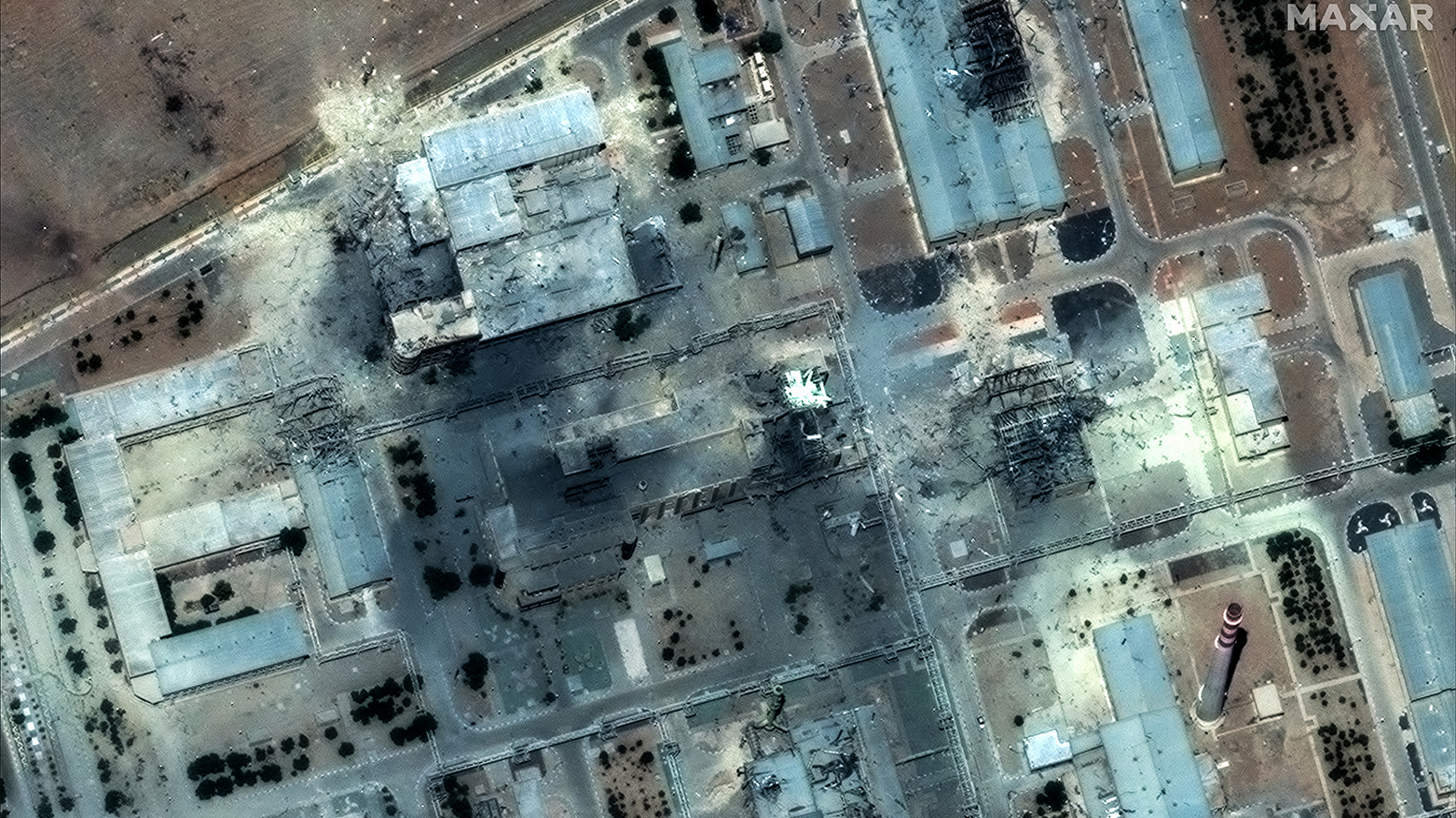Where Is Iran’s Uranium? Israel Claims Stockpile Is Sealed Underground
The fate of Iran’s 60%-enriched uranium after Israeli and U.S. strikes remains uncertain. While Israeli officials say it’s sealed in damaged bunkers, others—including IAEA—suspect Tehran moved part of it. Debate continues amid fears Iran preserved nuclear leverage.

By Kamaran Aziz
ERBIL (Kurdistan 24) — The fate of Iran’s highly enriched uranium (HEU) stockpile after the 12-day war with Israel remains uncertain and fiercely contested, as multiple accounts from U.S., Israeli, and international officials present a murky intelligence landscape. Central to the new wave of disclosures is a statement from Axios Global Affairs Correspondent Barak Ravid, citing Israeli intelligence sources who say the uranium has not left Iran’s underground bunkers.
In a post on his official X account, Ravid stated:
“Three senior Israeli officials with direct knowledge of the intelligence about Iran's nuclear program told me the HEU [Highly Enriched Uranium] stockpile is in underground tunnels in Fordow and Isfahan 'sealed off' from the outside world due to the bombing of the nuclear facilities. Israeli officials believe they will detect any Iranian attempt to recover the HEU.”
Three senior Israeli officials with direct knowledge of the intelligence about Iran's nuclear program told me the HEU stockpile is in underground tunnels in Fordow and Isfahan "sealed off" from the outside world due to the bombing of the nuclear facilities. Israeli officials… https://t.co/NjMetpkBsj
— Barak Ravid (@BarakRavid) June 27, 2025
This assessment comes as the New York Times published a report titled “Fate of Iran’s Enriched Uranium Is a Mystery,” citing U.S. and European intelligence concerns that Iran may have moved part or all of its 880-pound stockpile of uranium enriched to 60%—just below weapons-grade—prior to the strikes. American officials have long believed that, in the face of potential strikes, Iran would attempt to relocate the material for use as diplomatic leverage or to expedite weaponization.
However, there is no consensus on what occurred. President Donald Trump, whose administration ordered the U.S. airstrikes in support of Israel, stated:
“Nothing was taken out of [the] facility. Would take too long, too dangerous, and very heavy and hard to move!”
White House Press Secretary Karoline Leavitt added that intelligence agencies found:
“No indication to the United States that any of that enriched uranium was moved prior to the strike.”
Yet skepticism remains. The IAEA’s Director General Rafael Mariano Grossi told reporters:
“I don’t know if they moved all of it. But the evidence points to their moving out a lot of it.”
Grossi confirmed that vehicle activity had been detected in and out of nuclear facilities shortly before the missile strikes, and that the uranium was stored in containers small enough to fit "into the trunk of an ordinary car."
European officials, in preliminary assessments, share the view that Iran may have dispersed portions of the stockpile, though they caution their evaluations remain early and inconclusive.
Senator Lindsey Graham (R-SC), speaking after a classified Senate briefing, stated:
“I don’t know where the 900 pounds of enriched uranium exists, but it wasn’t part of the target set for several years. They are obliterated today, but they can reconstitute.”
Amid these geopolitical reverberations, Iranian Foreign Minister Abbas Araghchi acknowledged the severity of the damage inflicted during the war.
“These damages are serious, and expert studies and political decision-making are underway at the same time,” Araghchi told Iranian state television on Thursday.
He added that a detailed technical assessment is being conducted by the Atomic Energy Organization of Iran, and that the issue of demanding compensation would be placed on Iran’s diplomatic agenda.
“Now, the discussion of demanding damages and the necessity of providing them has been placed as one of the important issues on the country's diplomatic agenda.”
Meanwhile, questions persist about the original location of the HEU. Trump claimed it was stored at Fordow. Others point to Natanz, while the IAEA maintains most of the stockpile was located at Isfahan. The U.S. airstrikes targeted all three sites, reportedly crippling Iran’s centrifuges and damaging the Isfahan uranium conversion facility, which is essential for producing weapons-grade material.
Secretary of State Marco Rubio, speaking at the NATO summit in The Hague, stressed:
“The destruction of the conversion facility at Isfahan damaged Iran’s ability to move to a weapon.”
Still, experts warn that the setback may be temporary. If Iranian scientists regroup and if any uranium stockpile remains hidden, Tehran could be months away from building a crude bomb.
Representative Jim Himes (D-CT), ranking Democrat on the House Intelligence Committee, underscored the risk:
“Obliterating the sites means nothing if the Iranians moved enough 60% uranium, centrifuges, and other weaponization tools to build a bomb at some possibly unknown location… The regime may be vile, but they are not stupid.”
As of now, Western intelligence agencies remain divided and cautious. While Israeli officials are confident the HEU is trapped underground, others fear that Iran may have outmaneuvered the strikes, preserving its nuclear leverage for the next phase of confrontation or negotiation.
